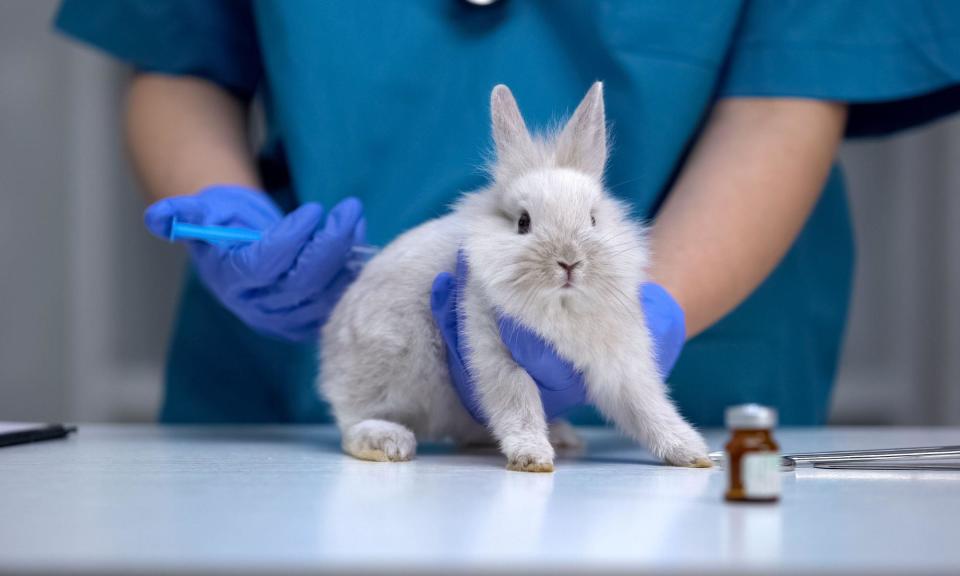UK watchdog plans formal investigation into vet pricing

The UK competition regulator is preparing to launch a formal investigation into the veterinary market after identifying “multiple concerns” in an initial review, including that pet owners may be overpaying for treatments and medicines.
The Competition and Markets Authority (CMA) said it wanted to move forward with a full review after an initial inquiry triggered an “unprecedented response” from 56,000 people, including customers and vet professionals, who raised a number of concerns about practices within the £2bn industry.
The watchdog is concerned that consumers may not be given enough information to make informed decisions over care, and that a rise in consolidation resulting in fewer independent surgeries has weakened competition.
Since 2013, about 1,500 of the 5,000 vet practices in the UK have been acquired by six of the largest corporate groups: CVS, IVC, Linnaeus, Medivet, Pets at Home and VetPartners, the CMA said.
Sarah Cardell, the CMA chief executive, said: “Our review has identified multiple concerns with the market that we think should be investigated further. These include pet owners finding it difficult to access basic information like price lists and prescription costs – and potentially overpaying for medicines.
“We are also concerned about weak competition in some areas, driven in part by sector consolidation, and the incentives for large corporate groups to act in ways which may reduce competition and choice.
“Given these strong indications of potential concern, it is time to put our work on a formal footing. We have provisionally decided to launch a market investigation because that’s the quickest route to enable us to take direct action, if needed.”
Independent vet practices accounted for 45% of UK veterinary practices in 2021, down from 89% in 2013. The number of pet owners has also increased, primarily as a result of the pandemic, with about 17m households having a furry companion in the UK.
The regulator is concerned that the larger corporations dominating the sector may be incentivised to act in a way that reduces choice for customers, leaving pet owners overpaying for medicines or prescriptions.
Owing to their scale and ability to invest in advanced equipment, larger companies may concentrate on offering more sophisticated, and therefore higher-cost, treatment that crowds out more affordable options.
Meanwhile, about 25% of pet owners were not aware they had an option to get prescriptions filled more cheaply elsewhere, meaning they were missing out on potential savings, even when accounting for prescription fees. Medicine sales make up about a quarter of the income of some vet practices, leaving little incentive to ensure clients were informed of other options.
The CMA said the situation suggested the regulatory framework may be outdated and no longer be fit for purpose.
Most of the industry’s regulations date to 1966, and primarily cover individual veterinary surgeons rather than non-vet owners, like the corporations that own the majority of sites today.
It means the Royal College of Veterinary Surgeons has limited leverage, including over transparency of pricing and and the true ownership structure of chain-owned practices.
“The provisional view is that outcomes for consumers could be improved if regulatory requirements and/or elements of best practice could be monitored or enforced more effectively,” the CMA said.
It will run a four-week consultation, before launching a formal investigation, giving it power to potentially mandate that vets give certain information to consumers, cap prescription fees or order the sale of businesses or assets, which could include breaking up some vet chains.
The industry body, the British Veterinary Association (BVA), welcomed prospects for reform, saying that regulation was “not fit for purpose” and was failing vet teams and clients.
However, while price rises were a concern for everyone, the BVA said it was “vital to recognise there is no NHS for pets.”
“Whether they are employed by corporate or independently owned practices, vets deliver highly specialised, tailored care for the UK’s pets and the cost is a fair reflection of investment in medical equipment, supplies and medicines, and the time vet teams dedicate to the care of each patient,” the BVA president, Anna Judson, said.
“At the British Veterinary Association, we’re keen to see healthy competition and consumer choice and so we are already taking steps to support vet practices to be more transparent both in terms of costs and practice ownership. It’s important that clients have as wide a choice of vet practices as possible so they can find a service that best suits the needs of themselves and their animals,” Judson added.
“We will continue to engage constructively with the CMA by responding to this latest consultation and will continue to play a leadership role in driving positive change for vets and their clients.”

 Yahoo Finance
Yahoo Finance 